What's New
Displaying results 1701 - 1710 of 4899

Resource | Publications,
This is the sixth round of IBBS survey conducted among men who have sex with men (MSM) and Transgender (TG) population in the Kathmandu valley of Nepal. Previously, the survey was carried out in 2004, 2007, 2009, 2012, 2015 and 2017 in the same location among the same population. In line with the objectives of previous rounds of IBBS, this survey was undertaken primarily with the objectives to: a) determine the trend of HIV, Syphilis, Chlamydia Trachomati (CT) and Neisseria Gonorrhea (NG) and associated risk behaviors among MSM/ Transgender (TG), b) to assess socio demographic characteristics, and, c) explore the association between the risk behaviors and HIV and other specific STIs among the MSM and TG population.
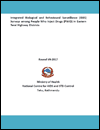
Resource | Publications,
HIV in Nepal is characterized as a concentrated epidemic. Nepal is categorized as a country facing concentrated HIV epidemic. The National Centre for AIDS and STD Control (NCASC) has estimated that there were 39,249 people living with HIV (PLHIV) in Nepal in 2014 with adult HIV prevalence 0.20% (NCASC, 2014). The National HIV/AIDS strategy 2011-2016 has adopted strengthening of the Second Generation Surveillance(SGS) system as one of the key principles of strengthening surveillance of HIV and STI in Nepal.
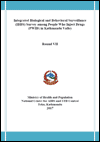
Resource | Publications,
Injection of drugs is strongly linked to HIV because of the higher rate of HIV transmission through needles. Syringe use and needle sharing habits are one of the key behavioral factors that act as the principle driver in the transmission of HIV and other blood borne pathogens. Findings obtained from the previous survey have shown that the prevalence of HIV in PWID ranges from 22 percent in 2003, 21.7 percent in 2005, 6.8 percent in 2007, 3.4 percent in 2009, 4.6 percent in 2011 to 2.8 percent in 2015 in Pokhara valley.
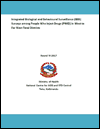
Resource | Publications,
IBBS surveys have been successfully conducted in various rounds in Nepal for the last about a decade among key populations at higher risk for HIV. Different round of IBBS were successfully carried out under leadership of NCASC .Evidences from different rounds of IBBS surveys carried out in Nepal suggest that HIV prevalence is still high among PWID compared to other Key population such as Female Sex workers (PWID) and Male having sex with Male (MSM). This is six round of IBBS surveys among PWID West to Far West Terai Districts.

Resource | Publications,
According to the results of the 2017 Revision, the world’s population numbered nearly 7.6 billion as of mid-2017, implying that the world has added approximately one billion people over the last twelve years. The growth of the world’s population has slowed down in the recent past. Ten years ago, the world’s population was growing by 1.24 per cent per year; today, it is growing by 1.10 per cent per year, yielding an additional 83 million people annually. Based on the projection assumptions made in the 2017 Revision, the growth of the world’s population is expected to slow down even further in the future, and the population is projected to reach about 8.6 billion in 2030.

Resource | Publications,
This third edition of the Unitaid/WHO market and technology landscape: HIV rapid diagnostic tests for self-testing report summarizes the current HIV testing gap; the challenges facing efforts to scale up; and the potential role HIV self-testing (HIVST) could play to achieve the United Nation’s 90-90-90 targets. In particular, the report synthesises the existing and emerging market demand and supply of kits.

Resource | Guidelines,
Cambodia had one of the fastest growing HIV epidemics in Asia and the Pacific region in the mid-1990s and became one of the few countries to have HIV trend reversed within five years. The HIV estimations and projections conducted in 2016 indicated that the HIV prevalence among general adult populations fell from an estimated peak of 1.7% in 1998 to 0.6% in 2016 and will continue to reach 0.5% by 2020. The number of HIV newly infected yearly is around 700 cases from 2016 to 2020. The decline trend reflects a ten folds reduction in annual new infections in the last twenty years. It is also estimated that approximately 15,000 people living with HIV who do not know their status.
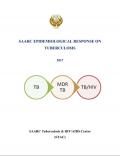
Resource | Publications,
This is the fifteenth Report on Tuberculosis (TB) situation of SAARC Region which is being published by SAARC Tuberculosis and HIV/AIDS Centre (STAC) in a series that started in 2003, which includes a compilation of regional and country-specific achievements, challenges and plans. The main purpose of the report is to provide a comprehensive and up-to-date assessment of the TB epidemic and progress made in TB care and control at Global, SAARC Region and Member States level.
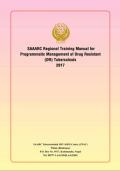
Resource | Guidelines,
SAARC Regional Training Manual on Programmatic Management of Drug Resistant TB (PMDT)” is a tool to facilitate SAARC Regional Training of Trainers on Management of Drug Resistant TB in SAARC region. This manual is prepared based on the Guidelines developed by Second Workshop to Develop Regional Guidelines for Treatment of MDR-TB and Third Meeting of Lab Directors from Reference Laboratories in SAARC Region held in Bhutan in 2007.
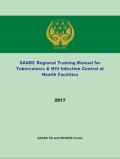
Resource | Guidelines,
This document is intended for conducting training thereby the development of human resource in TB and HIV/AIDS control and prevention. TB and HIV infection control are a combination of measures aimed at minimizing the risk of transmission within populations. Infection control requires and complements implementation of core activities in TB and HIV control and overall health-systems strengthening. It should be a major part of national infection prevention and control policies because it complements such policies – in particular, those that target including airborne infections.





